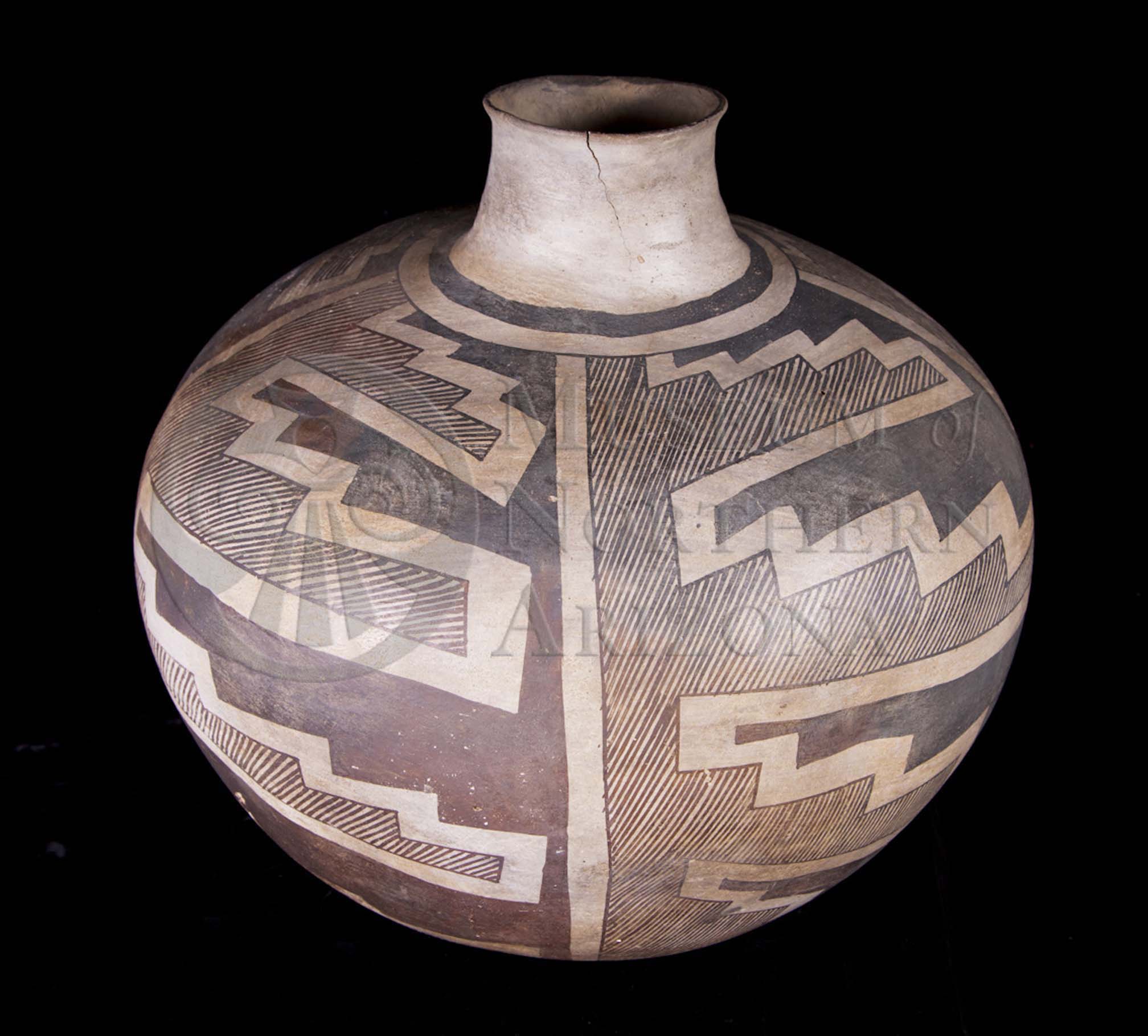
Reserve Black-on-white olla from the Museum of Northern Arizona collections. Click the image to open the Reserve Black-on-white gallery.
Reserve Black-on-white is a Cibola White Ware type characterized by balanced solid and hatched designs. The olla pictured above is also interactive!
Archaeological Culture: Ancestral Puebloan
Date Range: ca. A.D. 1100-1275.
Construction: By coiling.
Firing: In a neutral to reducing atmosphere.
Core Color: Dark to light gray.
Carbon Streak: Occasional.
Temper: Crushed sherds with sparse to heavy sand.
Surface Finish: Thin white slip; uneven polish (sometimes no polish).
Surface Color: White to light gray.
Forms: Bowls, jars, pitchers, and ladles.
Decoration:
- Paint: Matte black to brown to reddish brown.
- Pigments: Mineral, occasionally mixed with some organics.
- Design: Diagonal hatching balanced with solid elements, opposed or interlocking; curvilinear scrolls and rectilinear bands; stepped triangular solids; “eye” motifs; design elements continue to edge of rims; ticked rims.
Comparisons: Tularosa Black-on-white designs are more compact, and the hatching is parallel to the framing lines and more closely spaced; in Reserve Black-on-white, the hatching intersects the framing lines at a 45 degree angle; Reserve Black-on-white pitchers have shorter necks and more globular bodies.
Reserve Black-on-white is considered to be the black-on-white version of Wingate black-on-red and shares design styles.
Compiled from the following sources:
Kintigh, Keith, Greg Schachner, and Josh Watts. (2003) El Morro Valley Prehistory Project Ceramic Guide (link opens in new window), Arizona State University, Tempe.
Rinaldo, John B., and Elaine A. Bluhm. (1956) Late Mogollon Pottery Types of the Reserve Area. Fieldiana 36(7):149-186.
Compiled by:
Meghann M. Vance, Northern Arizona University Anthropology Laboratories.
